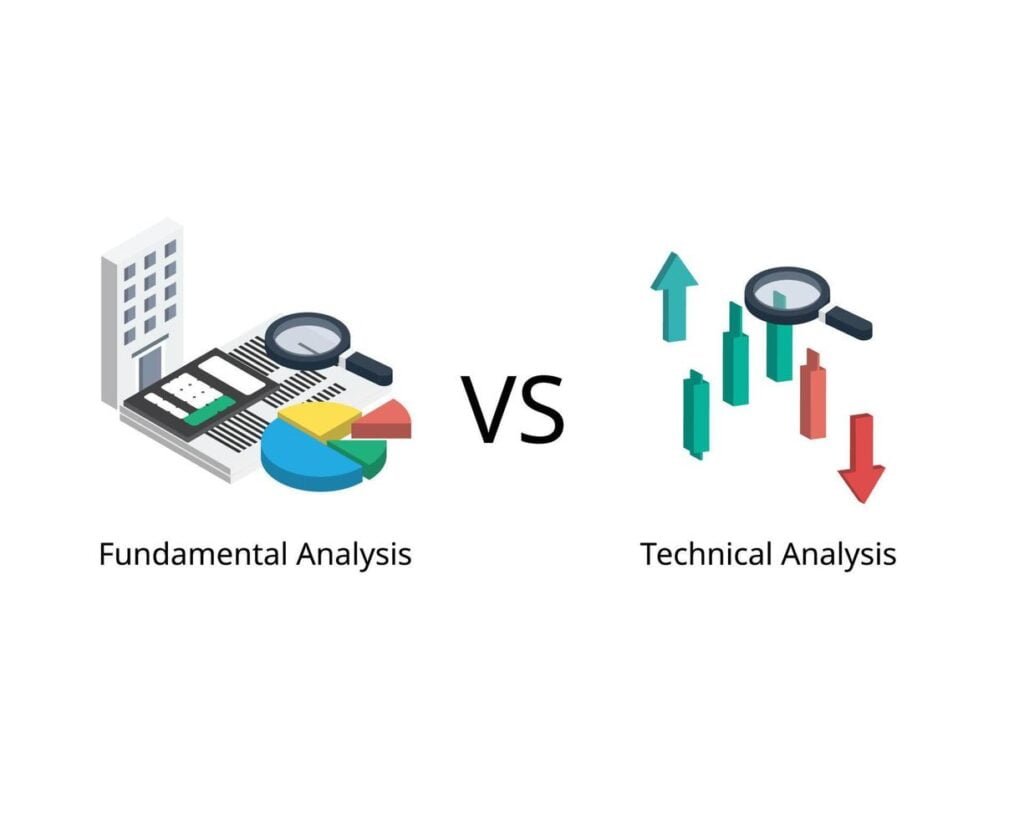- Talk To Our Experts : +91-000000000
Fundamental Analysis and Technical Analysis
Fundamental Analysis and Technical Analysis

Fundamental analysis and technical analysis are the two main approaches used to study the stock markets.
Even so, both approaches fall on opposing ends of the spectrum. Nevertheless, both of them are employed in the analysis and projection of future patterns in stock prices. As a result, the majority of novice traders and investors have numerous inquiries.
What, for instance, are stock technical and fundamental analysis? Which of the two, fundamental analysis or technical analysis, is preferable? So let’s look for the answers to these issues today.
So let’s begin with comprehending the Fundamental Analysis and the Technical Analysis.
Definition of Fundamental Analysis:

Determine the “basic value” of the stock to analyses securities using the fundamental analysis method. Therefore, a thorough examination of the fundamental variables directly affects the economy, industry, and enterprise. You can also spot possibilities when the share’s value differs from its current market price.
Definition of Technical Analysis:

A technique for estimating the stock’s “future price” is technical analysis. Consequently, you can spot patterns and trends with the use of charts. Therefore, you can base the share price on the interaction of market forces such as supply and demand.
Difference between Fundamental Analysis and Technical Analysis
Fundamental Analysis:
1. To study the security and determine its underlying value for potential long-term investment prospects, use this procedure. Investors employ this technique to raise the long-term worth of their stocks.
2. Fundamental analysis seeks to ascertain the stock’s actual core worth.
3. Based on the information at hand, decisions are made. Financial statements, managerial procedures, etc., are among the statistics that are assessed. These are a few of the variables that could affect the stock price of the company in the future.
4. For analysis, you need data from the past and present.
5. You can analyses an income statement, balance sheet, return on equity, etc. to ascertain the intrinsic value of the stock.
6. You can base your decision on the stock’s future price on the company’s past, present, and future achievements.
Technical Analysis:
1. A technique for assessing and predicting the price of an asset in the future is technical analysis. It is based on the volume of transactions and changes in pricing. Consequently assisting us in determining the stock’s future potential.
2. You can analyse short-term trading using the technical analysis method. Because doing so makes it easier to decide when to enter or depart the market.
3. Stock prices and market movements are taken into account while making judgments. Using historical charts, patterns, and trends, you may estimate stock price alterations.
4. Only the current facts are needed for technical analysis.
5. In a similar manner, technical indicators, chart patterns, and other factors are used to analyses future price developments.
6. Charts and indicators can be used to project stock prices in the future.
Which is better?
- Fundamental Analysis is meant for investments, and
- Technical Analysis is best for day trading.
- Fundamental Analysis is to wait for the prices of the stocks to increase and make a profit, but
- Technical Analysis is to make an instant profit, without waiting for longer-term.
Conclusion
So let’s look at how Fundamental Analysis and Technical Analysis turned out.
The trader needs to create their own tactics for technical analysis. They must therefore be flexible with them depending on the circumstances. Considering that markets perform differently at various times and that an all-encompassing good plan could not always succeed.
Investors utilise fundamental analysis to boost the long-term value of their stocks. Despite the fact that Fundamental Analysis and Technical Analysis differ, both are crucial for achieving investment goals.



